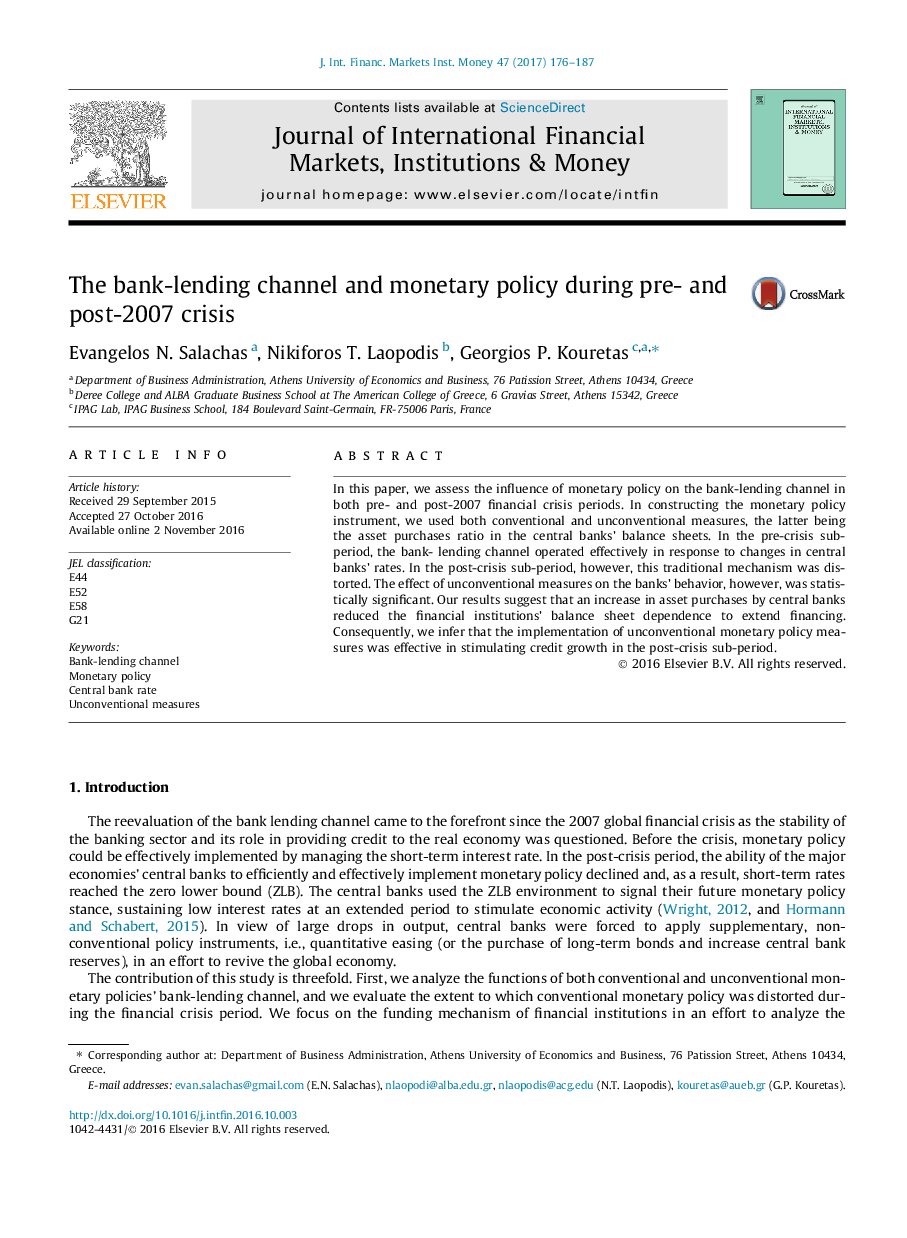| Article ID | Journal | Published Year | Pages | File Type |
|---|---|---|---|---|
| 5101052 | Journal of International Financial Markets, Institutions and Money | 2017 | 12 Pages |
Abstract
In this paper, we assess the influence of monetary policy on the bank-lending channel in both pre- and post-2007 financial crisis periods. In constructing the monetary policy instrument, we used both conventional and unconventional measures, the latter being the asset purchases ratio in the central banks' balance sheets. In the pre-crisis sub-period, the bank- lending channel operated effectively in response to changes in central banks' rates. In the post-crisis sub-period, however, this traditional mechanism was distorted. The effect of unconventional measures on the banks' behavior, however, was statistically significant. Our results suggest that an increase in asset purchases by central banks reduced the financial institutions' balance sheet dependence to extend financing. Consequently, we infer that the implementation of unconventional monetary policy measures was effective in stimulating credit growth in the post-crisis sub-period.
Related Topics
Social Sciences and Humanities
Economics, Econometrics and Finance
Economics and Econometrics
Authors
Evangelos N. Salachas, Nikiforos T. Laopodis, Georgios P. Kouretas,
